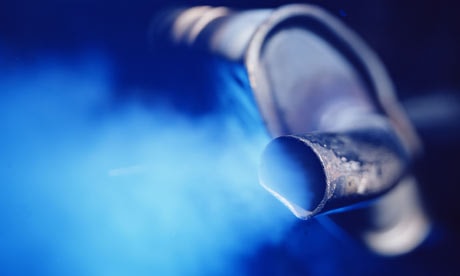Greenhouse gases are a major problem not only because they contribute to global warming but also because they have a serious impact on oceans, acidifying them and thus affecting the life of organisms living under water. But Liviu M. Mirica, PhD, assistant professor of chemistry in Arts & Sciences at Washington University in St. Louis, may have found the solution to make the automotive industry more environmentally friendly than ever.
Basically, Mirica believes that using catalysts, a specially developed technology, could turn carbon dioxide into fuels. The solution could come in the form of methanol or hydrocarbons, he explained.
The Washington University professor mentioned in the Journal of the American Chemical Society that a new metal complex has been developed to produce ethane (CH3-CH3) from methyl groups (CH3) and oxygen.
There are a few points to be clarified however but Mirica and his team of researchers are using data from a previous test conducted last year. At that time, they’ve been using a palladium compound to split the water from the rest of the compound.
“The catalyst we made for that reaction worked,” Mirica said in a statement according to sciencedaily.com. “But not as well as we hoped. But we noticed it was easily oxidized, even by the oxygen in air. This was our first hint that this might be an interesting system. So then we asked, what else could we use it for? One of our ideas was to use it to turn methane into ethane."
In order to create the necessary conditions for the hydrocarbon reaction to go backwards, meaning to turn gases into fuel, energy is needed as well and, until now, this was the main problem for developing efficient technologies in this regard. Mirica however claims that using brute force to provide energy, including sunlight, would resolve the problem.
"The reaction wants to run straight down the energy hill all the way to the bottom (CO2)," Mirica says. "Our goal is to design a catalyst that stops the reaction part of the way down the hill (when only one hydrogen has been removed). Carbon dioxide is an exceptionally stable molecule, so anything you do with it is going to require energy, " he added. "We're just trying to use the metal complex to minimize the energy input."
Basically, Mirica believes that using catalysts, a specially developed technology, could turn carbon dioxide into fuels. The solution could come in the form of methanol or hydrocarbons, he explained.
The Washington University professor mentioned in the Journal of the American Chemical Society that a new metal complex has been developed to produce ethane (CH3-CH3) from methyl groups (CH3) and oxygen.
There are a few points to be clarified however but Mirica and his team of researchers are using data from a previous test conducted last year. At that time, they’ve been using a palladium compound to split the water from the rest of the compound.
“The catalyst we made for that reaction worked,” Mirica said in a statement according to sciencedaily.com. “But not as well as we hoped. But we noticed it was easily oxidized, even by the oxygen in air. This was our first hint that this might be an interesting system. So then we asked, what else could we use it for? One of our ideas was to use it to turn methane into ethane."
In order to create the necessary conditions for the hydrocarbon reaction to go backwards, meaning to turn gases into fuel, energy is needed as well and, until now, this was the main problem for developing efficient technologies in this regard. Mirica however claims that using brute force to provide energy, including sunlight, would resolve the problem.
"The reaction wants to run straight down the energy hill all the way to the bottom (CO2)," Mirica says. "Our goal is to design a catalyst that stops the reaction part of the way down the hill (when only one hydrogen has been removed). Carbon dioxide is an exceptionally stable molecule, so anything you do with it is going to require energy, " he added. "We're just trying to use the metal complex to minimize the energy input."

